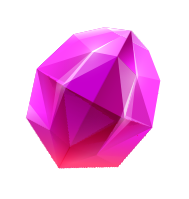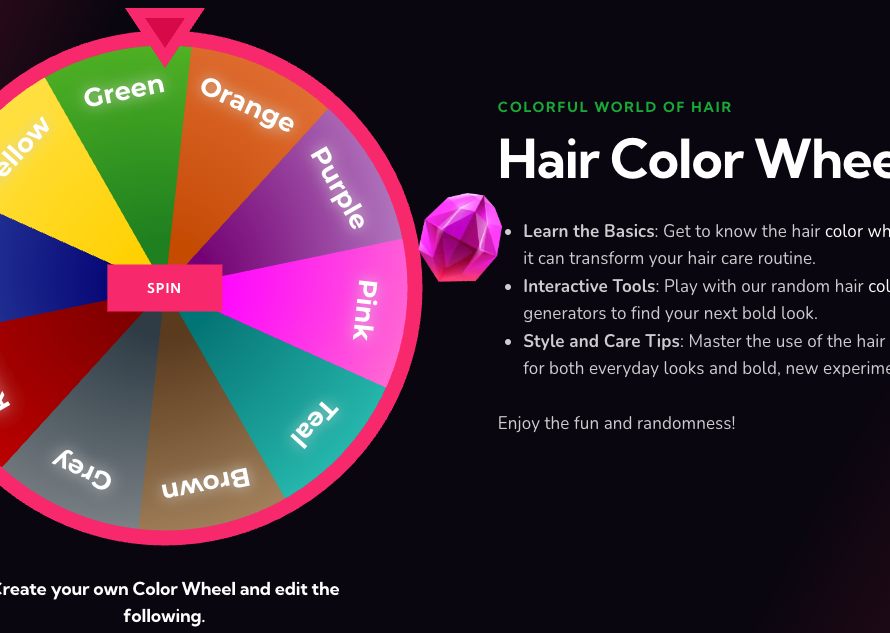Create your own Color Wheel and edit the following.
Spin the Color Wheel


- Understand Complex Color Theories with a simple spin.
- Discover Harmonious Color Combinations effortlessly.
- Make Decisions and Have Fun with interactive, gamified tools.
Enjoy the color with fun!
Number Wheel like a Carnival
Looking for a color wheel spinner to spark creativity or make decisions fun and effortless? Whether you’re a designer, artist, or just looking for a colorful way to explore new ideas, our spinnable color wheel is the ultimate tool! Dive into the vibrant world of hues and discover endless possibilities with tools like the random color wheel, hair color wheel spinner, and eye color spin wheel.
Understanding the Color Wheel
What is the Color Wheel Spinner?
The color wheel spinner is an interactive and customizable tool that allows you to spin through a random color wheel to discover unique and harmonious color combinations. Ideal for creative projects, character design, or even just for fun, the spinning color wheel makes choosing colors exciting and simple.
Key Features
- Random Color Selection: Spin the wheel for a randomly generated color.
- Customizable Options: Add or remove color names to personalize your experience.
- Color Theory Learning: Understand how colors complement, contrast, or harmonize.
Types of Color Wheels
- Primary Color Wheel: Shows the three primary colors.
- Secondary Color Wheel: Includes green, orange, and purple, created by mixing primary colors.
- Tertiary Color Wheel: Features six additional colors formed by mixing primary and secondary hues.
Explore Fun Colorful Tools
Our colorful wheel spinner is more than just a randomizer—it’s designed for creativity, fun, and decision-making. Explore tools like:
- Hair Colors Spin the Wheel: Perfect for deciding your next hairstyle.
- Eye Color Wheel Spinner: Visualize new eye color combinations effortlessly.
- Spin the Wheel Skin Color: Great for character creation or art projects.
Whether you’re spinning for fun or practical use, our tools cater to everyone, from gamers and artists to educators and designers.
The Significance of Spinning the Color Wheel
🌈 Why Spin the Color Wheel?
Discover Harmonious Color Combinations
The color wheel spinner is based on classic color wheel names, including:
- Primary Colors: Red, Yellow, Blue.
- Secondary Colors: Orange, Green, Purple.
- Tertiary Colors: Vermilion, Chartreuse, Teal, and more.
Learn Advanced Color Theory
Our complex color wheel helps you explore advanced concepts like:
- Complementary Colors
- Triadic Harmonies
- Monochromatic Palettes
Spin the wheel to see how colors interact and bring your ideas to life!
Applications of the Spinning Color Wheel
1. Art and Design
- Use the random color wheel to find complementary and contrasting hues for your artwork or designs.
- Apply theories from the complex color wheel to take your creativity to the next level.
2. Fun and Inspiration
- Use the random hair color generator to experiment with bold new looks.
- Spin the eye color spin wheel to explore new character options for games or art.
- Try the color personality wheel to discover hues that reflect your mood or creativity.
3. Education and Teaching
- Teachers can make color theory interactive and engaging with the spinnable color wheel.
Interactive Color Wheel Spinner
Features of Our Color Wheel Spinner
Our digital spinner is more than just a visual tool; it’s an interactive experience that allows you to:
- Experiment with Colors: Mix and match to see real-time results.
- Learn Quickly: Understand color relationships through direct interaction.
Benefits of Using Our Spinner
- Enhance Creativity: Break out of your usual color choices.
- Practical Applications: Apply your discoveries to design projects, home decor, and more.
You May Also Like
GAMES & FUN
Pick The Wheel is FREE, we offer customizable wheel options for your needs. Enjoy the thrill? Consider buying a license to motivate us to create more games and wheels on this platform.
How to Use the Color Spin Wheel
- Choose Your Options: Add or remove colors from the wheel.
- Click Spin: Watch the wheel rotate and land on a random color or combination.
- Apply the Results: Use the chosen colors for art, design, or decision-making.
How to Use Color Theory in Everyday Life
Practical Tips for Using Colors
- Home Decor: Choose complementary colors to create a harmonious environment.
- Website Design: Select a color scheme that reflects the tone and purpose of your site.
- Artwork: Experiment with contrasting colors for dynamic compositions.
Psychological Impact of Colors
Colors not only beautify our surroundings but also affect our emotions and decisions. For instance:
Red
- Psychological Impact: Red is a powerful color that is often associated with energy, passion, and action. It can stimulate the body, raising blood pressure and heart rate. It is also linked to desire and love, making it a popular choice in marketing to evoke strong emotions.
- Gradient Shades: #FF0000 to #E80000 enhances the vibrancy and intensity, often increasing feelings of excitement and urgency.
Red-Orange (Vermilion)
- Psychological Impact: This color combines the energy of red with the cheerfulness of orange. It is often associated with creativity, enthusiasm, and warmth. It can be stimulating and inviting, energizing viewers.
- Gradient Shades: #FF4500 to #E84200 provides a fiery visual that can inspire action and adventure.
Orange
- Psychological Impact: Orange is seen as a friendly and approachable color, often used to draw attention without being as overpowering as red. It promotes feelings of energy and vitality, and can also stimulate appetite and socialization.
- Gradient Shades: #FFA500 to #E89500 reinforces its vibrancy, making it an excellent choice for calls to action and attention-grabbing buttons.
Yellow-Orange (Amber)
- Psychological Impact: This color evokes a sense of optimism and reassurance. It combines the cheerfulness of yellow with the energy of orange, often used to communicate enthusiasm and positivity.
- Gradient Shades: #FFD700 to #E8B800 can make designs feel more energetic and inviting.
Yellow
- Psychological Impact: Yellow is the color of sunshine and is associated with joy, happiness, and energy. It can brighten spaces and minds, stimulating mental activity and generating muscle energy.
- Gradient Shades: #FFFF00 to #E8E800 enhances clarity and brightness, potentially increasing its positive psychological effects.
Yellow-Green (Chartreuse)
- Psychological Impact: This color is often associated with growth, freshness, and fertility. It’s a natural color that can help reduce stress and encourage relaxation when used in softer shades.
- Gradient Shades: #9ACD32 to #89B800 brings a lively, fresh look that can invigorate and inspire new ideas.
Green
- Psychological Impact: Green symbolizes nature and thus promotes peace, harmony, and restoration. Its presence can be calming and stress-relieving. Green is also associated with health and well-being.
- Gradient Shades: #008000 to #007300 deepens the sense of balance and tranquility, reinforcing stability and endurance.
Blue-Green (Teal)
- Psychological Impact: Teal combines the calming properties of blue with the balance of green. It is calming and revitalizing but can also encourage emotional stability and resilience.
- Gradient Shades: #008080 to #007373 enhances its soothing nature, making it ideal for promoting concentration and spiritual awareness.
Blue
- Psychological Impact: Blue is often associated with stability, serenity, and peace. It is believed to lower blood pressure and slow respiration and heart rate. It is used to create a sense of security and trust in branding.
- Gradient Shades: #0000FF to #0000E8 deepens the effect, promoting a profound sense of calm and responsibility.
Blue-Violet (Indigo)
- Psychological Impact: This color combines the stability of blue and the energy of red. It is often associated with reflection and deep contemplation, and can inspire feelings of justice and fairness.
- Gradient Shades: #8A2BE2 to #7A24D2 can stimulate deep thinking and spirituality.
Violet
- Psychological Impact: Violet is associated with luxury, wisdom, and dignity. It stimulates imagination and creativity, often favored by artists and creative thinkers.
- Gradient Shades: #EE82EE to #D875D8 enhances its regal qualities and can stimulate problem-solving as well as spirituality.
Red-Violet (Magenta)
- Psychological Impact: This color reflects passion and innovation. It can be uplifting and encourages a sense of originality and creativity. It’s a popular choice for brands that aim to stand out.
- Gradient Shades: #D02090 to #B81C82 can energize and inspire bold moves and creative solutions.
Colors play a pivotal role in our lives, affecting how we feel, think, and interact with the world. With our Color Wheel Spinner, you’re not just exploring different hues but also unlocking the potential of colors to influence your daily decisions and creative endeavors.
Practical Uses of the Color Spin Wheel
For Designers and Artists
- Select palettes for websites, branding, or artwork.
- Use the complex color wheel to find harmonious combinations.
For Fun and Games
- Use the random hair color generator to experiment with new styles.
- Spin the eye color spin wheel for creative character designs.
For Educators
- Teach color theory in an engaging and interactive way.
The Color Personality Wheel
Colors impact how we feel, think, and decide. The color personality wheel helps you explore how different hues affect your mood and creativity.
Psychological Impact of Colors
- Red: Energy, passion, and action.
- Blue: Calmness, trust, and serenity.
- Yellow: Happiness, creativity, and optimism.
- Green: Growth, harmony, and balance.
Spin the wheel and discover the colors that suit your vibe!
Decide in a snap with the tap of Pick The Wheel!
Enjoy the benefits of:
- Instant decision-making by entering options and letting the app choose.
- Eliminating indecision and overthinking for minor choices.
- Having fun with entertaining animations and interactive decision-making.
- Sharing and comparing results with friends for enhanced social engagement.
Dive into the colorful experience today, and let your creativity spin freely. Explore more random wheels and customize them for your own use on our website now!
FAQs
Q: How do I spin the color wheel?
Simply click the “Spin” button for a random rotation.
Q: What can I learn from spinning the color wheel?
Understand color harmonies, complementary colors, and how they affect each other. It’s a practical tool for anyone working with color.
Q: Can I use the color wheel for my projects?
Absolutely! Feel free to apply the color schemes you discover directly into your personal or professional projects.
Q: What can I use the color wheel for?
From personal projects like picking hair colors to professional uses like creating color schemes, the spinner is versatile and fun.



